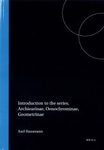Flora / Fauna
By: Axel Hausmann(Author), David Wilson(Illustrator)
600 pages, 24 plates with colour photos, 61 plates wtih b/w line drawings; 237 b/w photos and b/w illustrations, b/w distribution maps
![The Geometrid Moths of Europe, Volume 2 The Geometrid Moths of Europe, Volume 2]()
Click to have a closer look
About this book
Customer reviews
Biography
Related titles
About this book
Language: English
In The Geometrid Moths of Europe, Volume 2 on Sterrhinae, a number of difficult genera such as Cyclophora, Scopula and Idaea are covered. Especially Idaea with more than 100 species occurring in Europe, has caused a lot of problems to identify, but based on the many specimens illustrated on the 24 colour plates, the species of this genus can be identified much easier now. Apart from its largest species, the genus Idaea is illustrated a 1.5 times its natural size. The remaining Sterrhinae are in natural size on the colour plates. On additional black-and-white photos of species which are difficult to identify, their differential characters are pointed out with arrows. Three new species and three new subspecies are described. A map with the European distribution is given, with dots for verified specimens. Finally, there are line drawings of male and female genitalia of all species and also this volume contains a systematic catalogue of the European species, including those of the neighbouring regions such as North Africa, Macaronesia, Turkey, and the Middle East.
This reprint features several corrections and updates.
Customer Reviews
Biography
Axel Hausmann was born in 1960 in Munich, Germany and studied biology at the Ludwig-Maximilians-University (Munich) where he graduated in zoology. After obtaining his PhD he has been employed since 1989 at the Zoologische Staatssammlung Munchen, where he is head curator of the Lepidoptera section. Axel Hausmann has published many articles on Geometridae and is regarded as a leading authority on west Palaearctic Geometridae.
Flora / Fauna
By: Axel Hausmann(Author), David Wilson(Illustrator)
600 pages, 24 plates with colour photos, 61 plates wtih b/w line drawings; 237 b/w photos and b/w illustrations, b/w distribution maps
"This volume represents another significant contribution to a series on European Geometridae that will be seen in retrospect as perhaps the most significant milestone in our understanding of that fauna [...] The book brings together an immense and diverse amount of information in a clear and cohesive manner that will retain its value for many years to come. It is therefore an investment well worth making."
– Jeremy Holloway (Entomology Department, Natural History Museum, London). Journal of the Lepidopterists' Society 60(2), 2006, 179-180











































